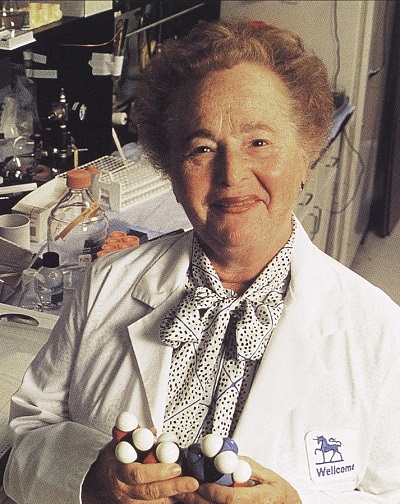 Scientists discover, publish, and get prizes – The Nobel Prize being one of the most prestigious. Inventors invent and patent their inventions. This is the world of discovery and invention, in a nutshell. However, often, scientists also invent and obtain patents. Sometimes the patents might not have anything to do with the work for which they have received the Nobel Prize. Let us now explore Roger Penrose, who was born in September, and his patent in this eleventh article of a series of articles on Nobel laureates and their patents.
Scientists discover, publish, and get prizes – The Nobel Prize being one of the most prestigious. Inventors invent and patent their inventions. This is the world of discovery and invention, in a nutshell. However, often, scientists also invent and obtain patents. Sometimes the patents might not have anything to do with the work for which they have received the Nobel Prize. Let us now explore Roger Penrose, who was born in September, and his patent in this eleventh article of a series of articles on Nobel laureates and their patents.
Throughout human history, medicines have been developed by a combination of serendipity, trial and error, empirical evidence, and so on. There have been cases where traditional remedies have been analysed, active ingredients in them identified, and used as medicine. Quinine, Aspirin, and dihydroartemisinin are some well-known examples of plant based medicines derived from traditional medicines.
However, all such methods are time consuming, resource intensive, and prone to many failures before a useful drug is obtained. However, with better understanding of disease mechanisms it became possible to develop a drug based on the understanding of the target of the drug. Wikipedia defines this as, “The drug is most commonly an organic small molecule that activates or inhibits the function of a biomolecule such as a protein, which in turn results in a therapeutic benefit to the patient. In the most basic sense, drug design involves the design of molecules that are complementary in shape and charge to the biomolecular target with which they interact and therefore will bind to it.”
This method of drug development has revolutionised the field and is often referred to as rational drug design. Gertrude Elion was one of the pioneers instrumental in developing this method. Elion was an American biochemist and pharmacologist who was awarded the 1988 Nobel prize in Physiology or Medicine along with George H. Hitchings and Sir James Black “for their discoveries of important principles for drug treatment”. Hitchings was her colleague in Wellcome research laboratories and Whyte worked with ICI Pharmaceuticals.
Elion lost her maternal grandfather to cancer and decided to devote her life to fighting the disease. She studied chemistry at Hunter College and New York University. It was difficult for her to find work as a chemist because she was a woman. However, the Second World War created a shortage of male chemists since many men had joined the war. This helped Elion to find work at a laboratory. In the 1940s she moved to GlaxoSmithKline which was then Burroughs Wellcome’s research laboratory and worked there until her death in 1999.
Elion worked on discovering new drugs using the differences in biochemistry and metabolism between normal human cells and pathogens – disease-causing agents such as cancer cells, protozoa, bacteria, and viruses. She and her team thus, could design drugs that could kill or inhibit the reproduction of particular pathogens without harming human cells. She developed or helped develop drugs that are used to treat a variety of disease, such as leukaemia, malaria, lupus, hepatitis, arthritis, gout, and herpes. She also developed immunosuppressants that ensured that transplanted organs were not rejected by the host body.
She has nearly a hundred patents to her name. All of them belong to the field of drugs, their manufacturing method, or treatment methods using them. A majority of these have Hitchings as another inventor. Almost all of them show the applicant as the Wellcome Foundation. Her patents span a 30 year period, which shows the longevity of her inventive work.



